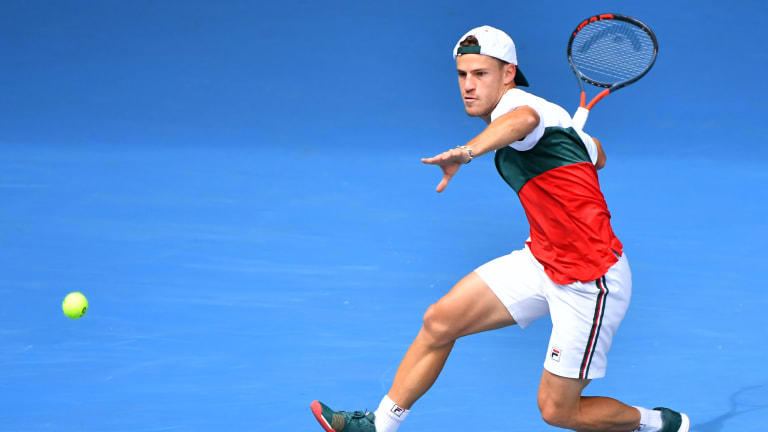Treat your return of serve with more respect, and you’ll hit it better than ever. Our five-part series on one of tennis’ most important shots begins now.
Be honest: When preparing for a match, how much time do you devote to your return of serve? For most recreational players, it’s an afterthought. Which is a huge oversight, as an effective return game is an indispensable part of a winning formula. Look at the players sitting atop the pro-tour rankings—they’re not the biggest servers, they’re the best returners.
The first step to improvement is changing the way you think about your returns, which should include these three critical elements.
1
BECOME MORE SITUATIONALLY AWARE
All points matter, but your antennae should go up under certain circumstances.
“I use Monopoly as an example,” says Frank Giampaolo, a high-performance coach who has worked with numerous top juniors and aspiring pros. “Buying land is always valuable, but certain properties are simply more valuable.” Game points, particularly late in a tight set, should always draw your most trusted and reliable return tactics. If you’re behind in the score, favor targets that have bigger margins: deep down the middle, and crosscourt.
When it’s 0–30, that could be the moment to nail your return down the line and break open the game. Or, ratchet up the pressure by altering your positioning—something recreational players do far too infrequently—and dare your opponent to serve to your favored wing. Along those lines, if your opponent leans on a particular serve, pinch toward that spot to take it away. Sometimes your best play is forcing your opponents to do what they like least.
2
ATTITUDE ADJUSTMENT
Don’t approach the return of serve as simply a starting point—it’s an opportunity. Yes, the first goal is to make sure the ball gets over the net and in between the lines. Erratic returning, littered with donated points to the server, is just as egregious an offense as rampant double faulting. However, the bare minimum should not be the ceiling. Just as simply putting the ball safely in the service box is not the goal for an impactful serve, returning with the same lowly aspirations is equally unproductive.
If you’re up against a big server, reacting, defending and surviving may be the best you can do. But for the most part, the return should be a purposeful shot that makes an impression on your opponent.
“I know it’s a weapon in my game,” Diego Schwartzman has said about his return. The 5’7” Argentine studies where his opponents serve, and incorporates this information into his game plan. “You never know when you are going to improve, or when it's going to be the important return.”
